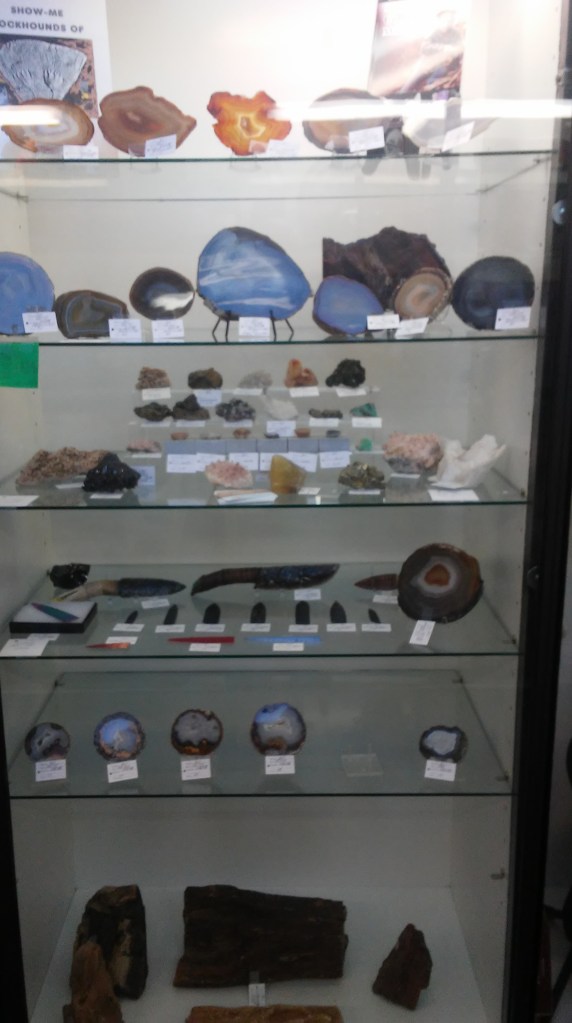
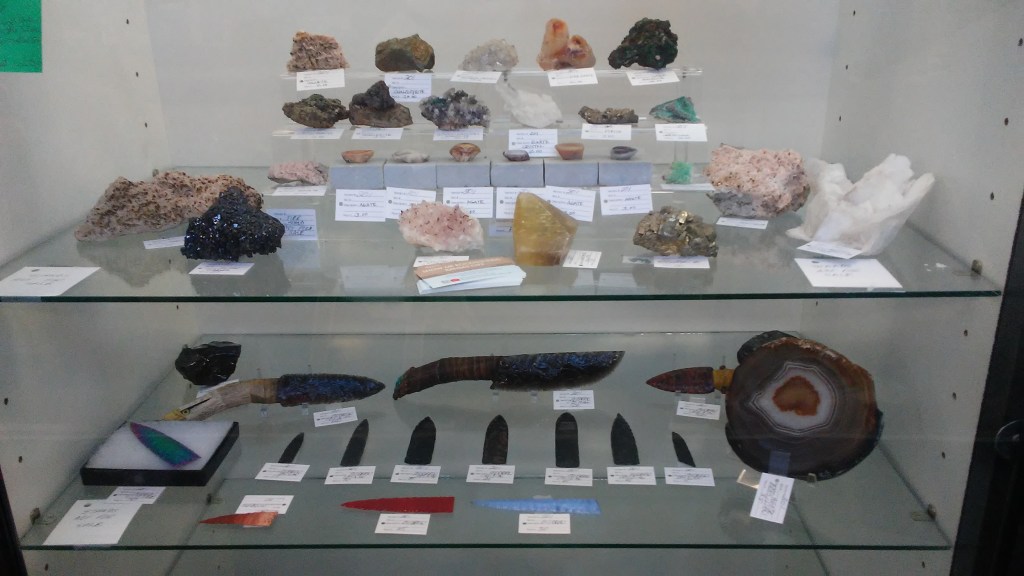


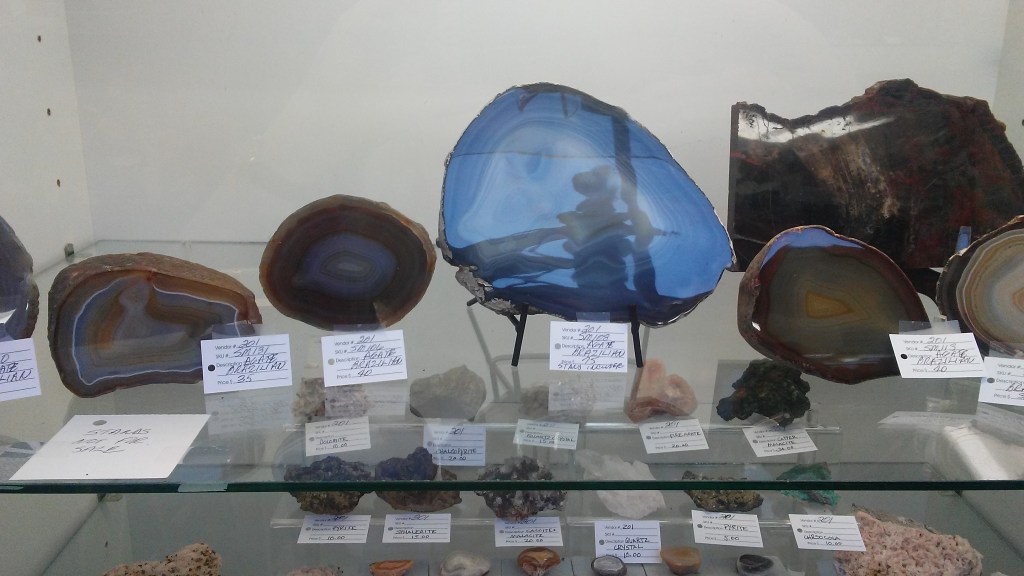
ALL PHOTOS BY Dan or Connie Snow

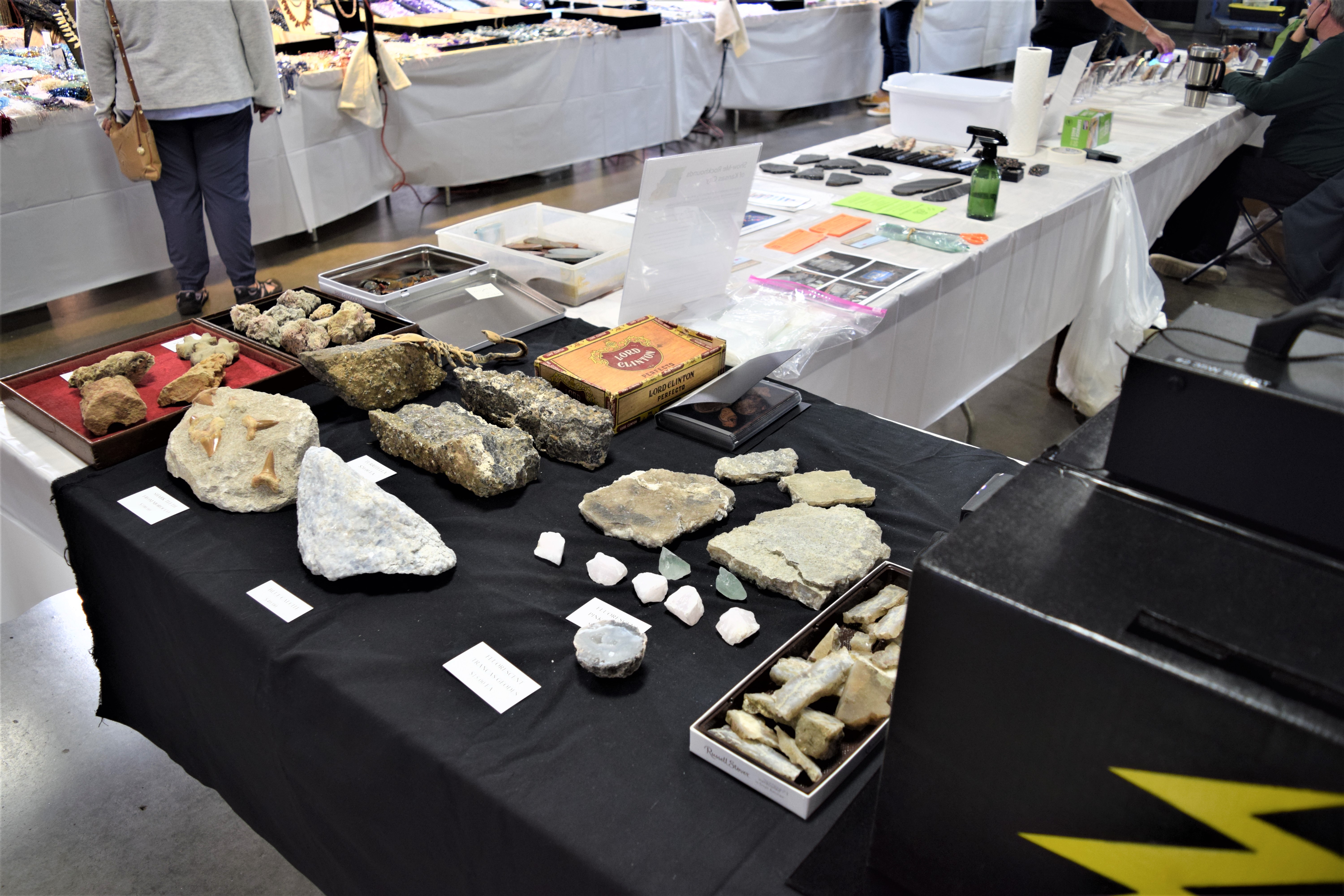
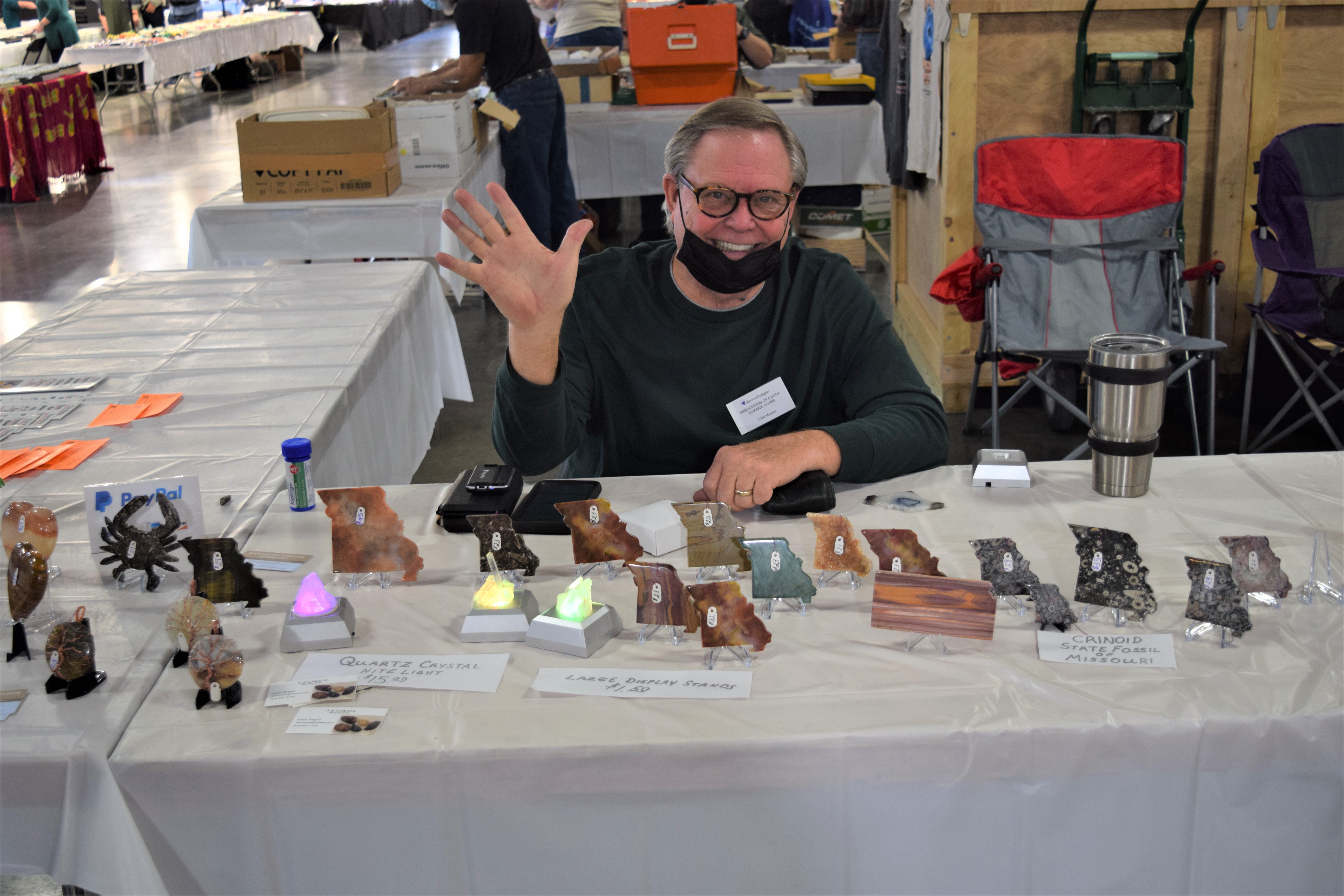
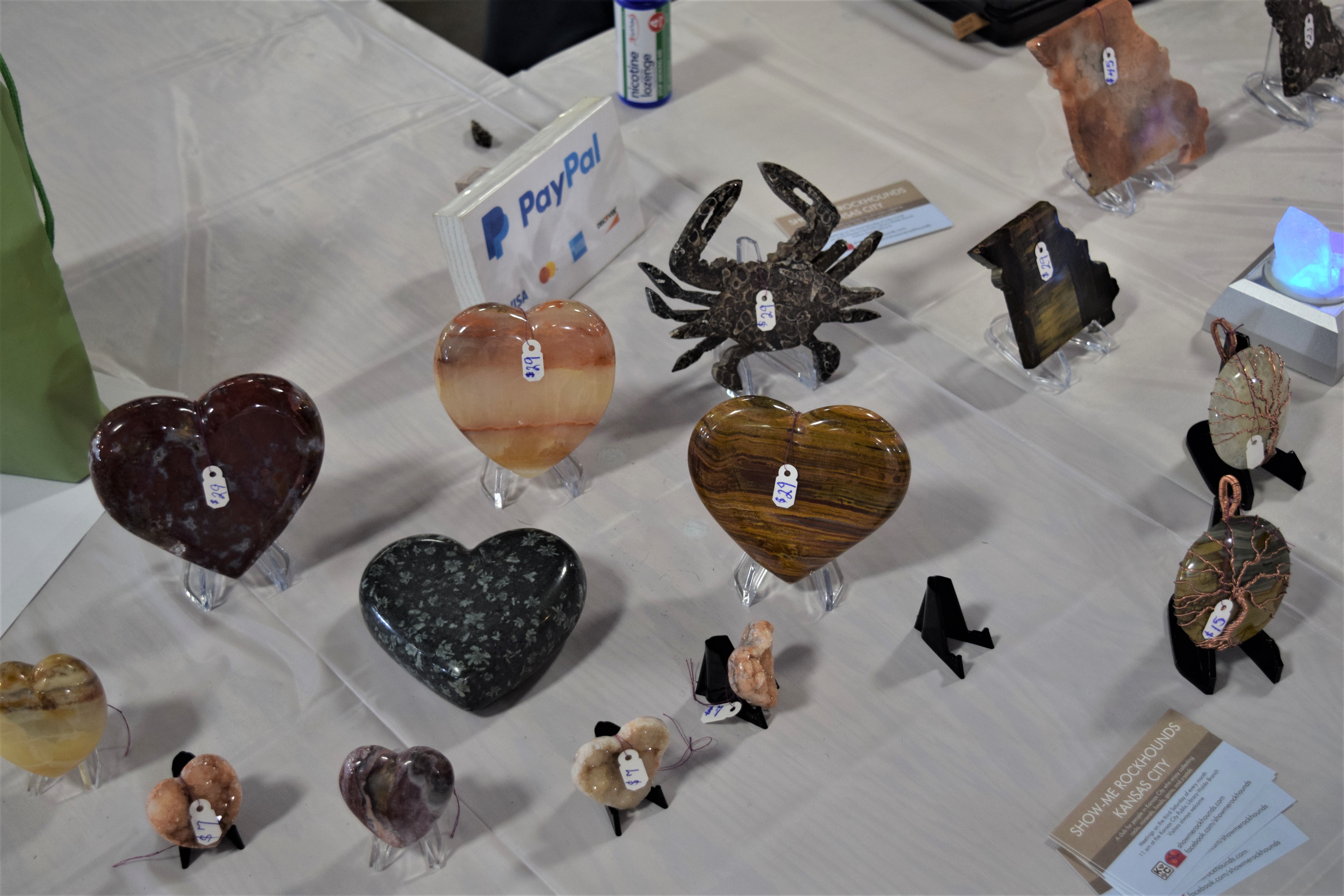



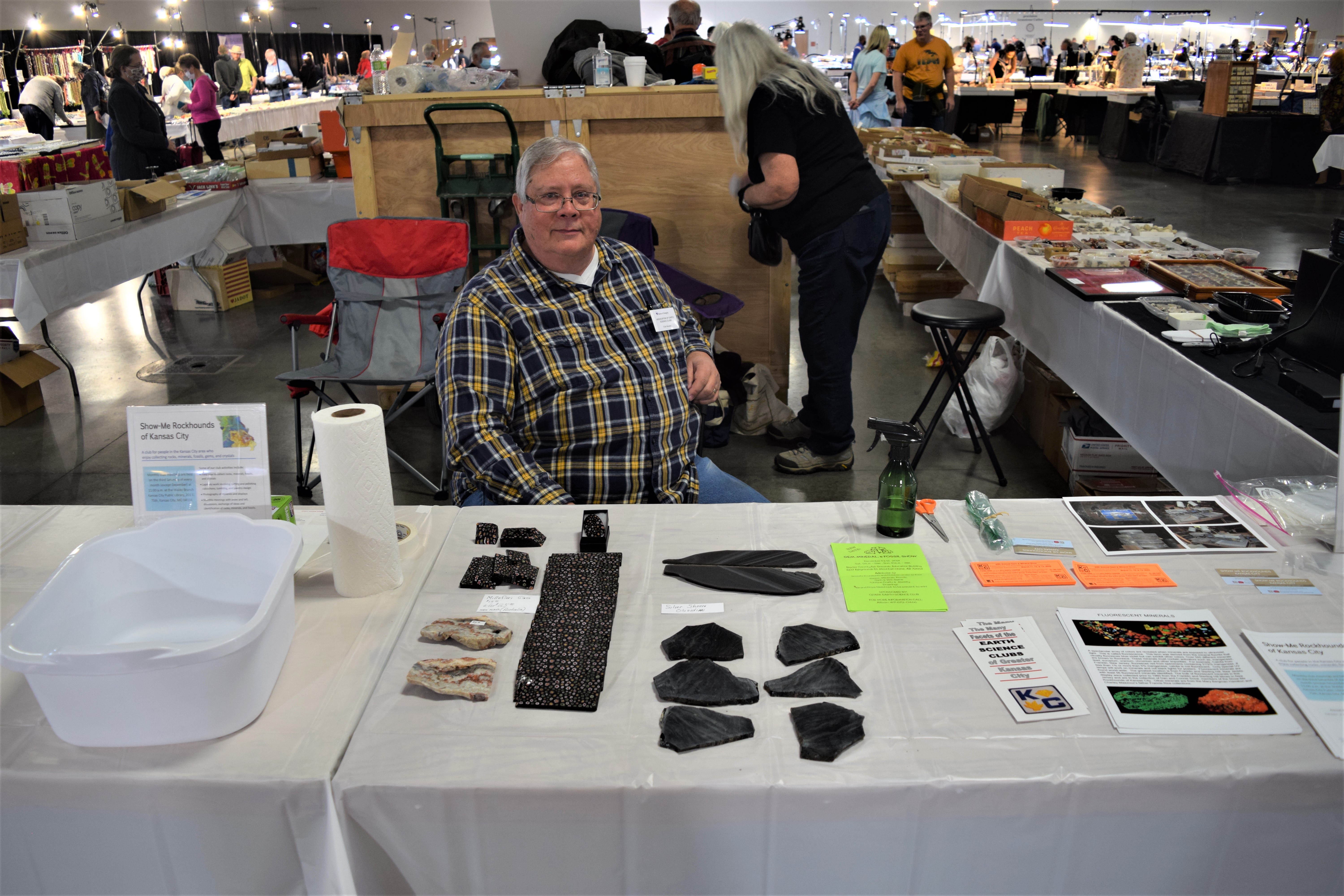

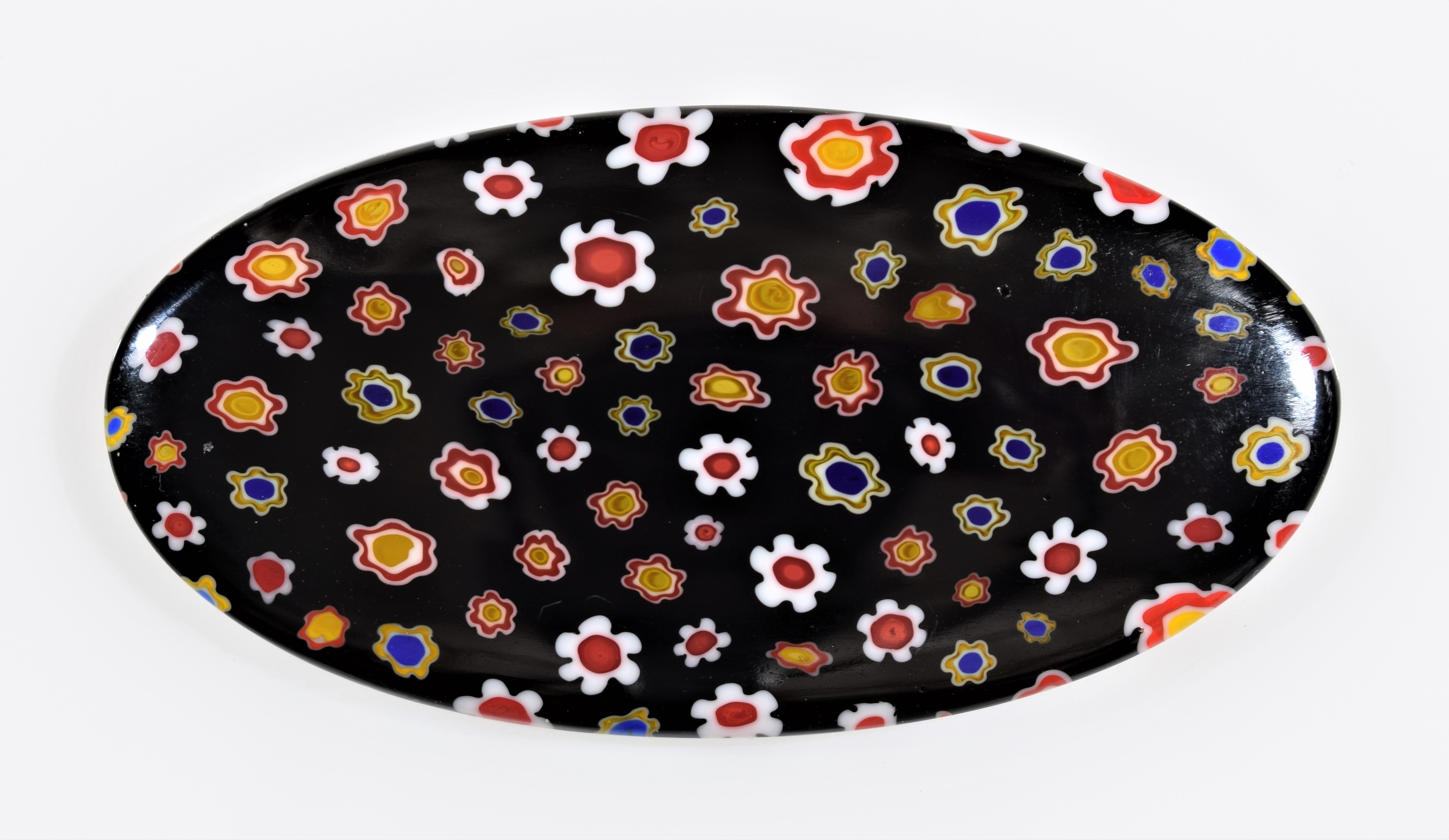

Here’s a coupon for $1 off admission to the show. Come see the displays of Rocks and Minerals. Retailers will be selling rocks, fossils, cabochons, jewelry, beads and much more. Showmerockhounds.com
Show-Me Rockhounds – show-off some of their activities and display specimens of rocks and minerals. Credit for the display and arrangement goes to Steve. He put together two very nice posters showing some club activities including wire wrapping, field trips and related photos of interest. One poster asks it you might be a rockhound. All specimens are from Steve’s and other members collections. What a great variety! Something for everyone. Photos by Connie Snow
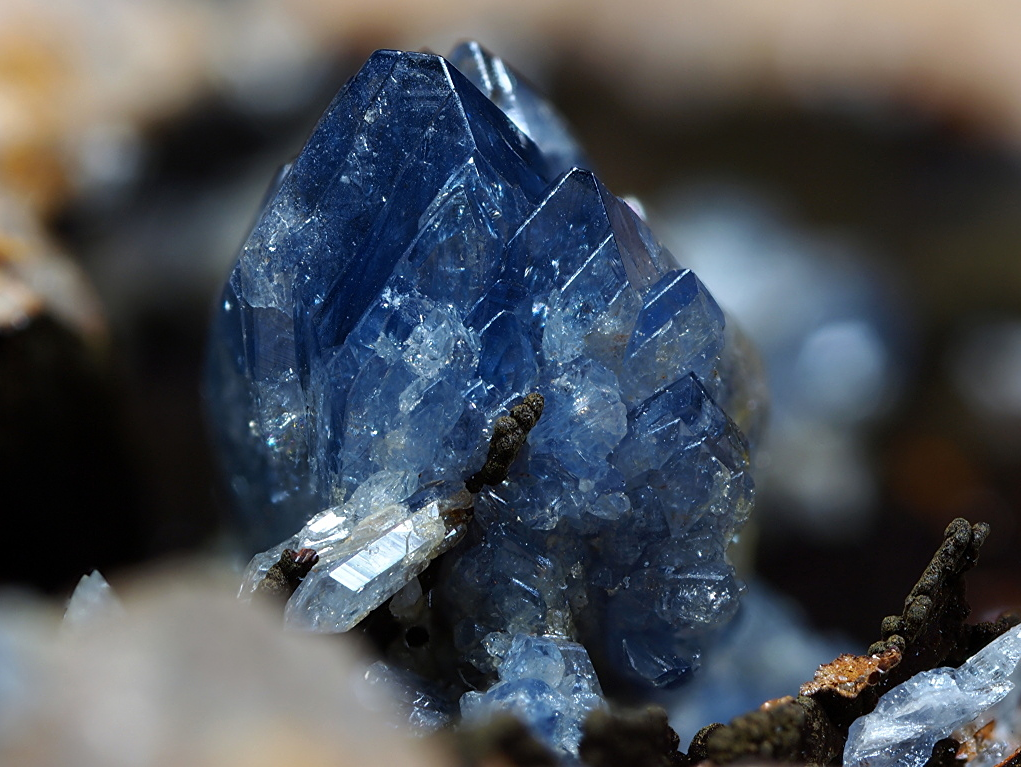
Photo by Yaiba Sakaguchi
This scorodite specimen is only 8mm long, but it is very pretty. It is from the Drakelands Mine, Plympton, Tavistock District, Devon, England, UK. It gets its name from the Greek σκορόδιου = “Scorodion”, which means it smells like garlic when heated. Scorodite can also be called Arsenic Sinter. It comes from the oxidation of arsenopyrite or other arsenic-bearing species.
Chemical Formula: Fe3+AsO4·2H2O
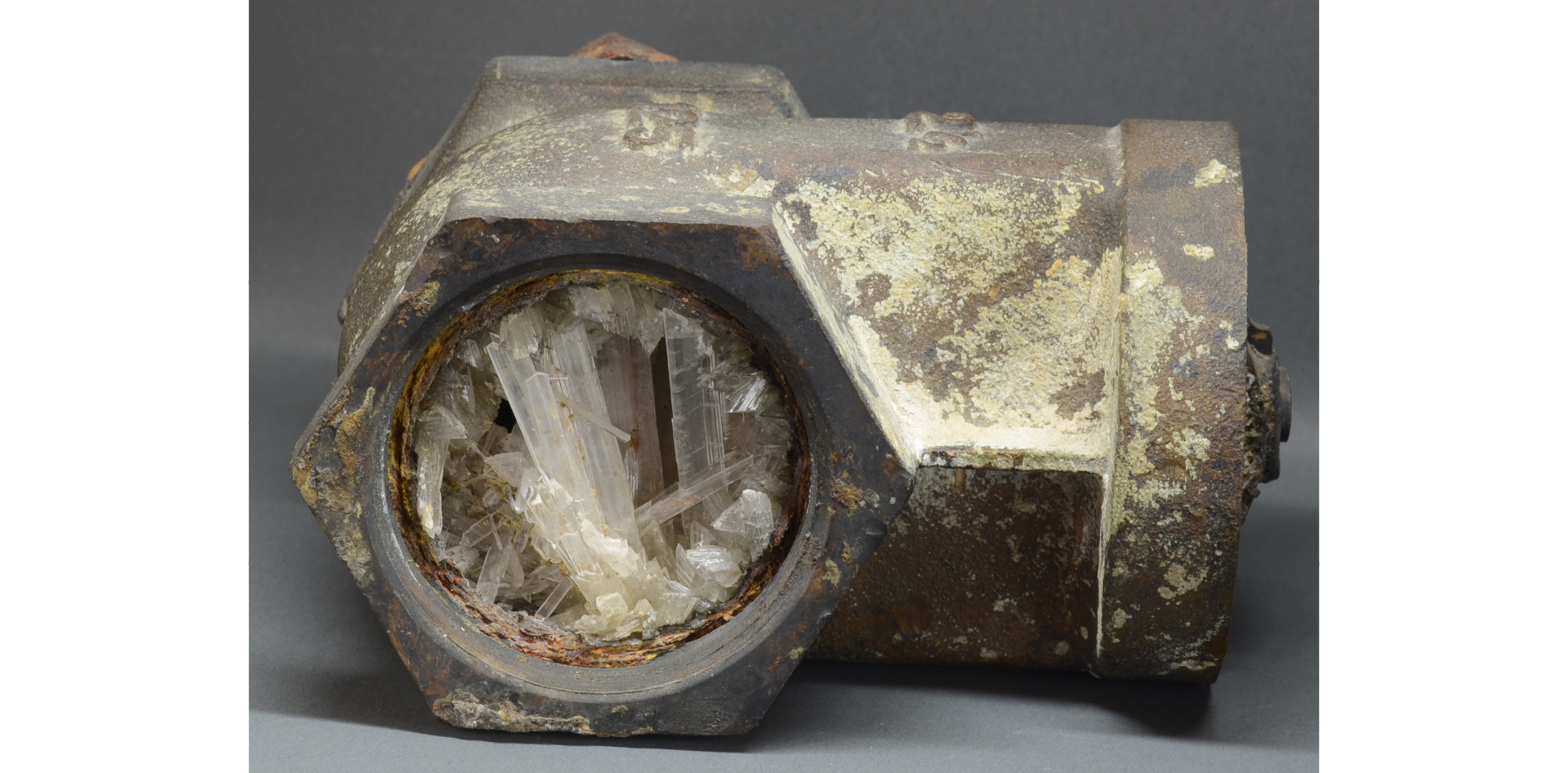
Steve Hardinger and Dragon Minerals. Retrieved from Mindat Photo of the Day
Everyone knows Kansas City’s water tastes really good, despite being “hard water.” Kansas City municipal water averages 100 ppm (CaCO3 equivalent), which is classified as “moderately hard” by the Water Quality Association. But these people’s hard water would be off the charts!
A valve was stuck in a pipe somewhere in the Naica mining complex in Chihuahua, Mexico. “The valve was removed with the aid of a saw, and voila! the pipe was completely clogged with fine, colorless and gemmy gypsum crystals to 7 cm.”
No word on what they did with the crystals after they unclogged the pipe.

Cuprosklodowskite Photo: http://rruff.info/repository/by_minerals/Cuprosklodowskite/Cuprosklodowskite__R060570__Sample__Photo__6697__M.jpg
This is from the Musonoi Extension mine, near Kolwezi, Shaba Province, Zaire, from the collection of Michael Scott. The Rruff Project used single-crystal X-ray diffraction to confirm the identity of the cuprosklodowskite. It is basically Sklodowskite (named after Marie Sklodowska Curie) that contains copper.
More info: http://rruff.info/cuprosklodowskite/display=default/
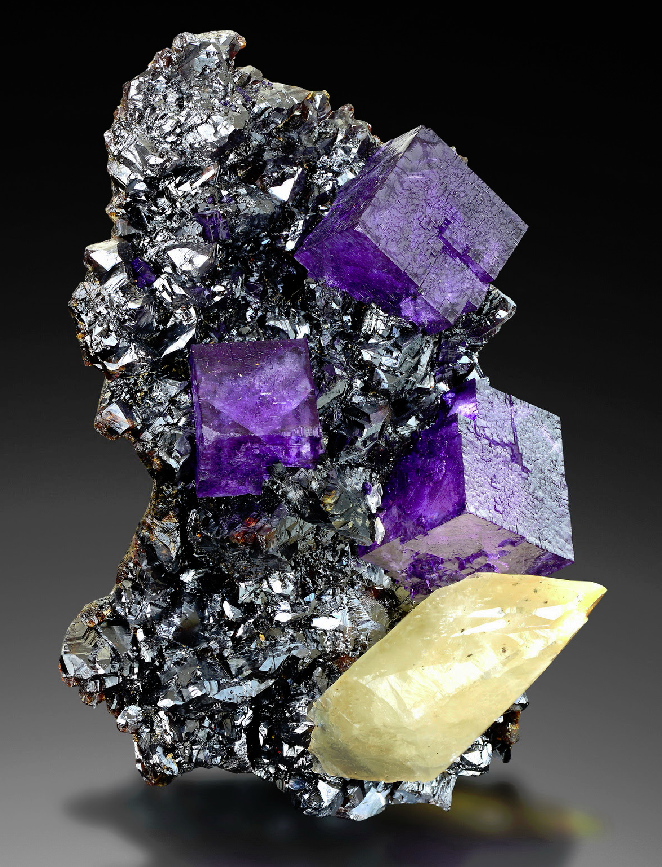
Photo by Anton Watzl
Here is some fluorite (purple) and calcite (yellow) on sphalerite (silver). No further comments, I just thought this was pretty.

Amethyst cathedral at the Sutton Museum. Photo by Stephanie Reed
Article by Dr. Bill Cordua, University of Wisconsin-River Falls
Have you ever been to a show and seen enormous amethyst geodes or crystals 3-5 feet or more in height? The tubular geodes are lined with deep purple gemmy amethyst crystals. How do such wonders form?
These excellent geodes come from a region along the Brazil-Uruguay border. The genesis of deposits on the Brazil side of the border has recently been extensively researched by an international team of geochemists lead by H. Albert Gilg of Techniche University Munchen in Germany (Gilg, et. al., 2003). The geodes are mined from several lava flows belonging to the Parana Continental Flood Basalt Province. This was one of the largest outpourings of basalt lava known. An estimated 800,000 cubic kilometers of lava extruded over an 11 million year time span. For comparison, this would be enough to cover Minnesota with a pile of basalt lava over 2 miles high. The lava outburst occurred as part of the opening of the South Atlantic Ocean during Cretaceous time about 130 million years ago. Of all these flows, however, only a few are known to host amethyst cathedral geodes.
Gilg et al. proposed a 2-stage model for their formation. In the first stage the large hollows form. This was caused as volcanic gases were released from certain lavas as they cooled. Not every lava has enough dissolved gas to form such big openings. As gas bubbles emerged from the congealing lava (much as bubbles emerge when beer or soda pop is poured) they coalesced as they rose. The lava was cooling fast too, and soon became so thick and sticky that bubbles quite rising and were trapped. The bulbous to tubular shapes thus point towards the top of the flow, a fact easily seen when the geodes are in place in the mines. These cavities, though, were empty of crystals.
The second stage was the formation of the amethyst, plus celadonite, calcite and gypsum fillings. An important clue to this event is the presence of small gas and liquid bubbles (called fluid inclusions) trapped within these minerals. These are samples of the mineral-forming liquids caught as the crystals grew. Fluid inclusions are treasure troves of information when studied with sophisticated instruments. Analyses of the fluid inclusions in the amethyst, calcite and gypsum show them to be filled with slightly salty water. This water had a temperature of no more than 100 degrees C, and possible less than 50 degrees C, during mineral formation. These cannot be fluids related to the magma that formed the lavas.
What was the source of these fluids? An amazing story unfolds from the radiometric dating of the minerals. The basalts formed about 130 million years ago, but the green celadonite, which makes up the rinds of the geodes, formed about 70 million years ago. For 60 million years these enormous cavities sat empty of crystals. Trace element data from the fluid inclusions gives another important clue to the source of the mineral-forming fluid. Below the lavas is a large aquifer (the Botucatu aquifer) filled with ground water that closely resembles the fluid inclusion liquids. Uplift and tilting of the area about 70 million years ago would force water out of the aquifer into the porous areas of the overlying lava. In the lava flow these waters would have found volcanic glass. Glass breaks down over geologic time and makes silica and other chemicals available in a form that is readily soluble in water soaking through the rocks. The water carried these chemicals into the cavities, where the amethyst and other minerals grew due to cooling and pressure release.
The special combination of geologic circumstances, unfolding over millions of years, is not often duplicated. Understanding the process gives geologist tools to prospect more efficiently for these wonders.
Reference:
Gilg, H. et. al, 2003, “Genesis of amethyst geodes in basaltic rocks of the Serra Geral Formation (Ametista do Sul, Rio Grande do Sul, Brazil): a fluid inclusion, REE, oxygen, carbon, and Sr isotope study on basalt, quartz and calcite” Mineralium Deposita vol. 38, p. 1009-1025.
The Glacial Drifter 08/2011, The Gemrock 06/2015